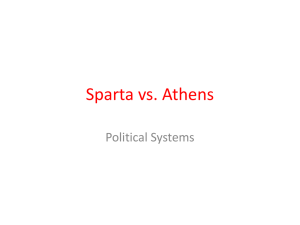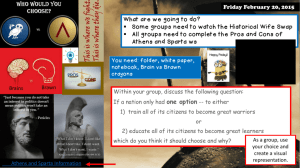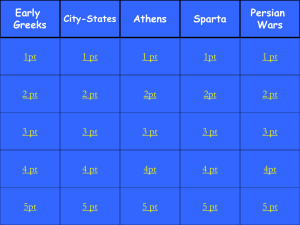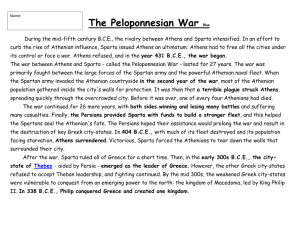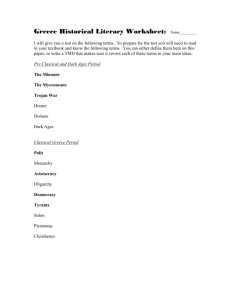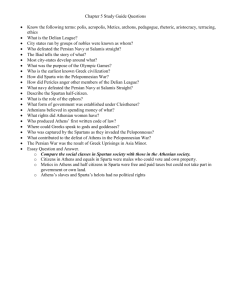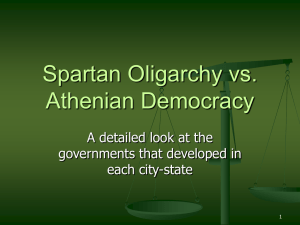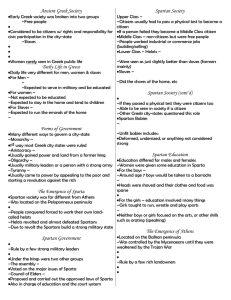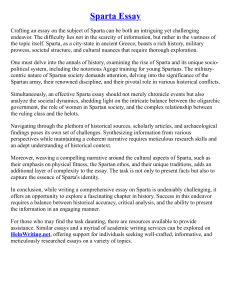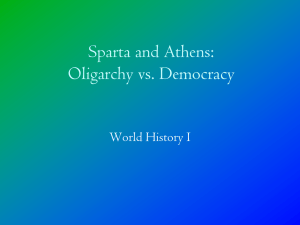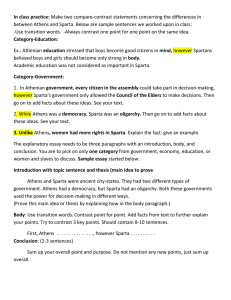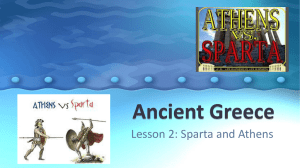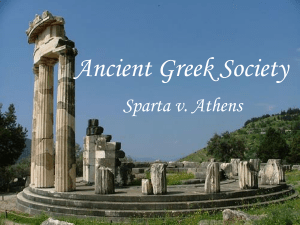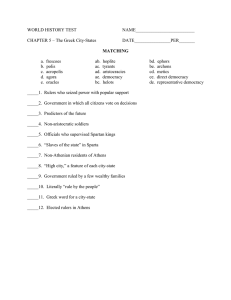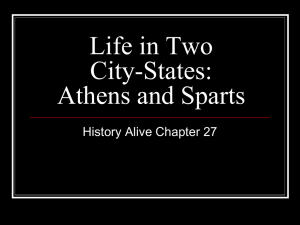6 - LMS
advertisement
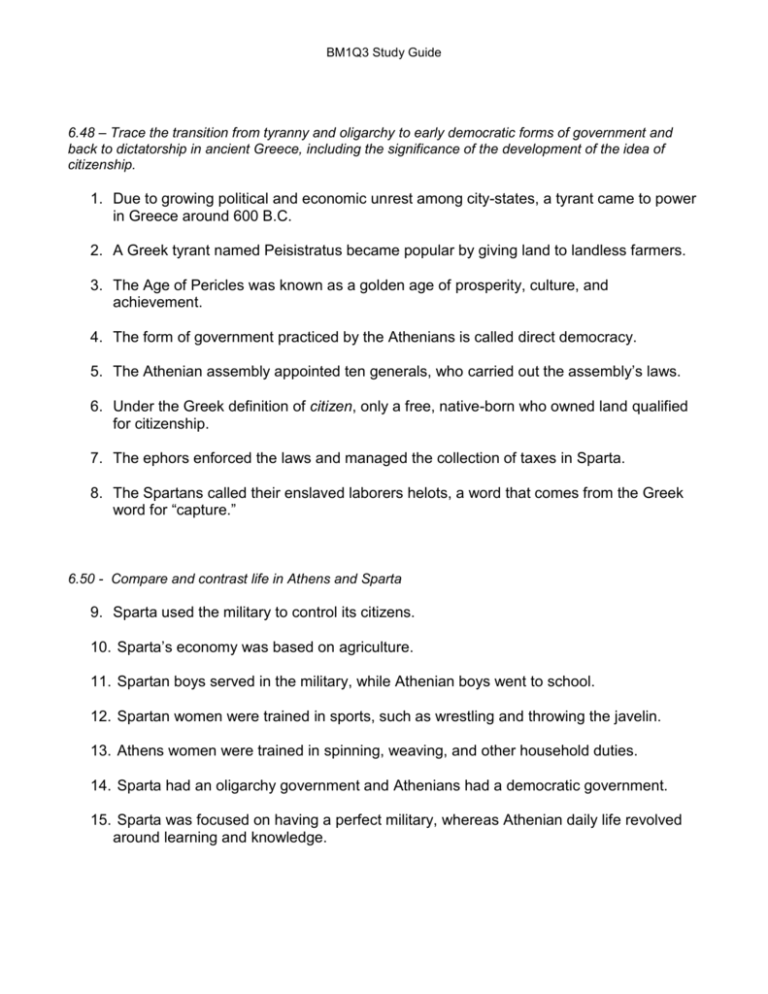
BM1Q3 Study Guide 6.48 – Trace the transition from tyranny and oligarchy to early democratic forms of government and back to dictatorship in ancient Greece, including the significance of the development of the idea of citizenship. 1. Due to growing political and economic unrest among city-states, a tyrant came to power in Greece around 600 B.C. 2. A Greek tyrant named Peisistratus became popular by giving land to landless farmers. 3. The Age of Pericles was known as a golden age of prosperity, culture, and achievement. 4. The form of government practiced by the Athenians is called direct democracy. 5. The Athenian assembly appointed ten generals, who carried out the assembly’s laws. 6. Under the Greek definition of citizen, only a free, native-born who owned land qualified for citizenship. 7. The ephors enforced the laws and managed the collection of taxes in Sparta. 8. The Spartans called their enslaved laborers helots, a word that comes from the Greek word for “capture.” 6.50 - Compare and contrast life in Athens and Sparta 9. Sparta used the military to control its citizens. 10. Sparta’s economy was based on agriculture. 11. Spartan boys served in the military, while Athenian boys went to school. 12. Spartan women were trained in sports, such as wrestling and throwing the javelin. 13. Athens women were trained in spinning, weaving, and other household duties. 14. Sparta had an oligarchy government and Athenians had a democratic government. 15. Sparta was focused on having a perfect military, whereas Athenian daily life revolved around learning and knowledge.

